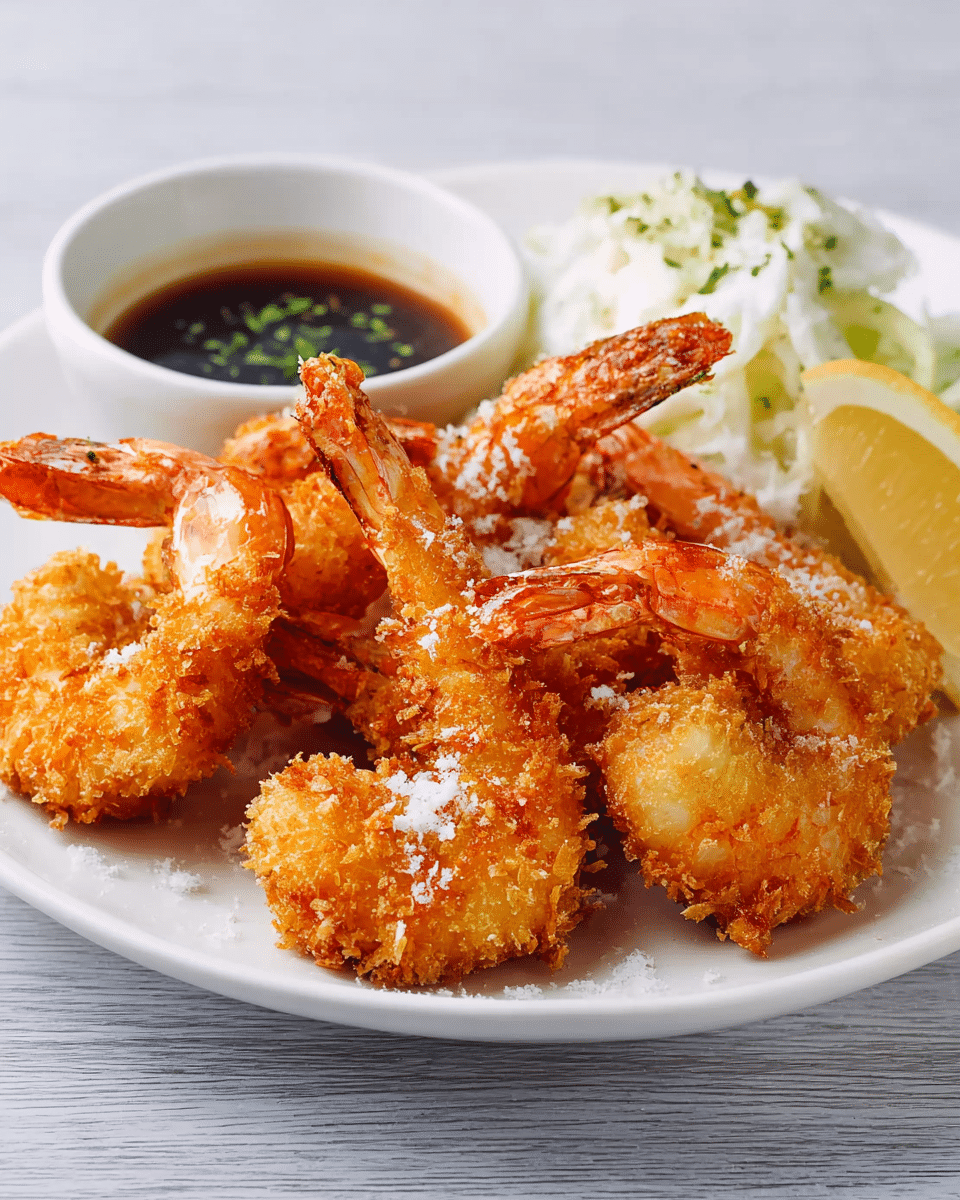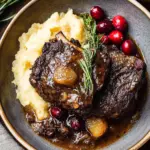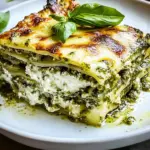Ebi Fry is a classic Japanese dish known for its perfect balance of crispy texture and juicy shrimp. The panko breadcrumbs create a light, airy crunch that contrasts beautifully with the tender shrimp inside. A quick squeeze of lemon and a drizzle of tonkatsu sauce takes this dish to the next level, creating an irresistible combination of flavors.
This dish is ideal for a light lunch, dinner, or as an appetizer for a Japanese-themed meal. Its simplicity, combined with the satisfying crunch, makes it an excellent choice for anyone looking to experience authentic Japanese flavors at home. Plus, it’s incredibly easy to make, perfect for both beginners and seasoned chefs alike.
Full recipe:
Ingredients:
-
12 large shrimp, peeled and deveined
-
1/2 cup all-purpose flour
-
2 large eggs, beaten
-
1 cup panko breadcrumbs
-
1/4 teaspoon salt
-
1/4 teaspoon black pepper
-
Vegetable oil for frying
-
Lemon wedges for serving
-
Tonkatsu sauce for serving (optional)
Directions:
-
Begin by preparing the shrimp. Rinse and pat them dry with paper towels.
-
Set up a breading station with three shallow bowls. In the first bowl, place the all-purpose flour. In the second, beat the eggs. In the third, place the panko breadcrumbs, salt, and black pepper.
-
Dredge each shrimp in the flour, ensuring it is fully coated. Then dip it into the beaten egg, followed by the panko mixture. Press gently to adhere the breadcrumbs to the shrimp.
-
In a deep frying pan, heat the vegetable oil over medium-high heat. Once the oil reaches about 350°F (175°C), carefully place the shrimp into the oil, working in batches if necessary.
-
Fry the shrimp for 2-3 minutes, turning them halfway through, until they are golden brown and crispy.
-
Remove the shrimp from the oil and drain on paper towels to remove excess oil.
-
Serve the shrimp immediately with lemon wedges and tonkatsu sauce on the side for dipping.
Prep Time: 15 minutes | Cooking Time: 10 minutes | Total Time: 25 minutes Kcal: 230 kcal | Servings: 4 servings
Ebi Fry vs. Shrimp Tempura: Key Differences
While Ebi Fry and shrimp tempura might seem similar, they are quite different in terms of preparation and flavor. The key distinction lies in the breading. Ebi Fry is coated in flour, dipped in egg wash, and then coated with panko breadcrumbs, which give it a thicker, crunchier exterior. In contrast, shrimp tempura uses a batter made from flour, starch, and egg, resulting in a lighter, crispier coating. The two dishes share a love for shrimp, but the texture and preparation methods set them apart, making each one unique in its own right.
The Popularity of Ebi Fry in Japanese Cuisine
Ebi Fry has become a staple in many Japanese homes, thanks to its simplicity and versatility. It’s a dish that’s easy to prepare and doesn’t require any advanced cooking techniques. For many Japanese families, Ebi Fry is the go-to dish for special occasions or weeknight dinners. The dish’s popularity can also be attributed to its frequent appearance on the menus of “Western-style” Japanese restaurants or “yoshoku” eateries. These restaurants specialize in dishes like curry rice, katsu (breaded and fried pork), and Ebi Fry, catering to those who crave the flavors of Western cooking, adapted to suit Japanese tastes.
Another reason for its popularity is that Ebi Fry is a common item in bento lunches. The crispy shrimp holds up well when packed into a lunch box, making it a favorite among schoolchildren and office workers alike. With its appealing crunch and delicious taste, it’s no wonder that Ebi Fry remains a go-to comfort food in Japan.
How to Serve Ebi Fry
Ebi Fry is typically served with a few simple accompaniments that enhance the flavors without overpowering the dish. It is often paired with finely shredded cabbage, which adds a refreshing crunch that complements the richness of the fried shrimp. A drizzle of tonkatsu sauce or a side of tartar sauce provides a tangy, slightly sweet contrast to the savory shrimp.
The choice of sauce can vary depending on personal preference. Tonkatsu sauce, a thick, sweet sauce often used with breaded dishes like pork cutlets, is a popular choice for Ebi Fry. Alternatively, a simple tartar sauce, made with mayonnaise, boiled eggs, pickles, and a hint of mustard, can bring a creamy and tangy element to the dish. Some people also enjoy squeezing a wedge of fresh lemon over the shrimp to add a bright, citrusy flavor.
Why Ebi Fry Is Perfect for Any Meal
Ebi Fry is incredibly versatile and can be enjoyed in many different settings. Whether served as a main dish for dinner, a side dish at a gathering, or as part of a bento box, it fits perfectly into various meal types. The crunch of the panko coating, combined with the delicate sweetness of the shrimp, makes it a dish that appeals to a wide range of tastes.
One of the greatest things about Ebi Fry is its ability to be customized. If you prefer a lighter breading, you can adjust the amount of panko or even use a gluten-free alternative. Additionally, you can experiment with different dipping sauces or add more vegetables to the side to make the dish more colorful and balanced. This adaptability makes Ebi Fry a great choice for family meals, dinner parties, and even casual get-togethers.
Tips for Perfect Ebi Fry
To ensure your Ebi Fry turns out perfectly every time, there are a few tips to keep in mind. First, it’s essential to use high-quality shrimp. Look for large, fresh shrimp that are deveined and have their tails on. This adds to the visual appeal of the dish and provides a better texture when fried.
Next, make sure the shrimp is properly dried before breading. Excess moisture can cause the breading to become soggy, so patting the shrimp dry with paper towels is a crucial step. Also, when breading the shrimp, make sure the coating is even and covers the shrimp completely. This ensures a uniform crunch when the shrimp is fried.
Another key tip is to fry the shrimp at the right temperature. The oil should be heated to about 350°F (175°C), ensuring that the shrimp cook evenly and develop a golden, crispy exterior. If the oil is too hot, the shrimp may burn on the outside before cooking through. On the other hand, if the oil is too cold, the shrimp will absorb too much oil, making them greasy and heavy.
Conclusion
Ebi Fry is a delightful and satisfying dish that has earned its place in Japanese cuisine as a comfort food favorite. Its crispy, golden exterior and tender shrimp interior create a perfect combination that is sure to please anyone who enjoys seafood. Whether served with a tangy sauce, accompanied by shredded cabbage, or packed in a bento lunch, Ebi Fry is a versatile dish that can be enjoyed in many different settings.
The simplicity of the recipe, combined with its delicious flavors, makes Ebi Fry a great choice for home cooks looking to experiment with Japanese cuisine. By following the straightforward breading process and frying techniques, you can easily recreate this dish in your own kitchen and enjoy the authentic taste of Japan.






